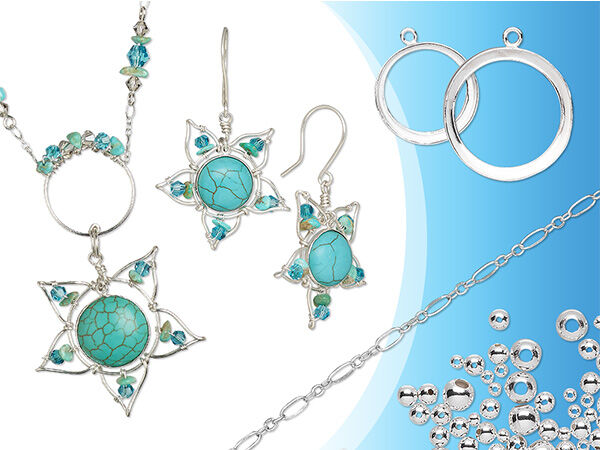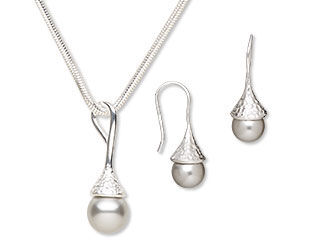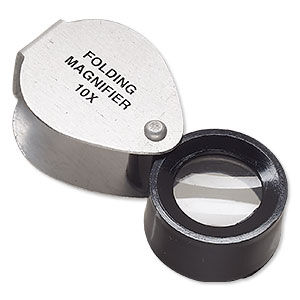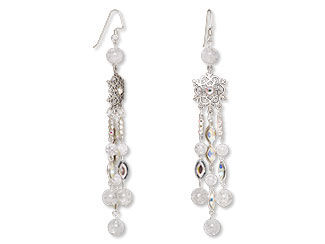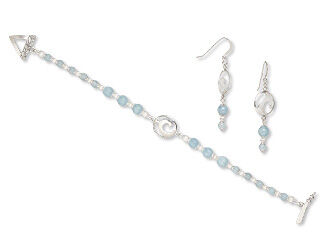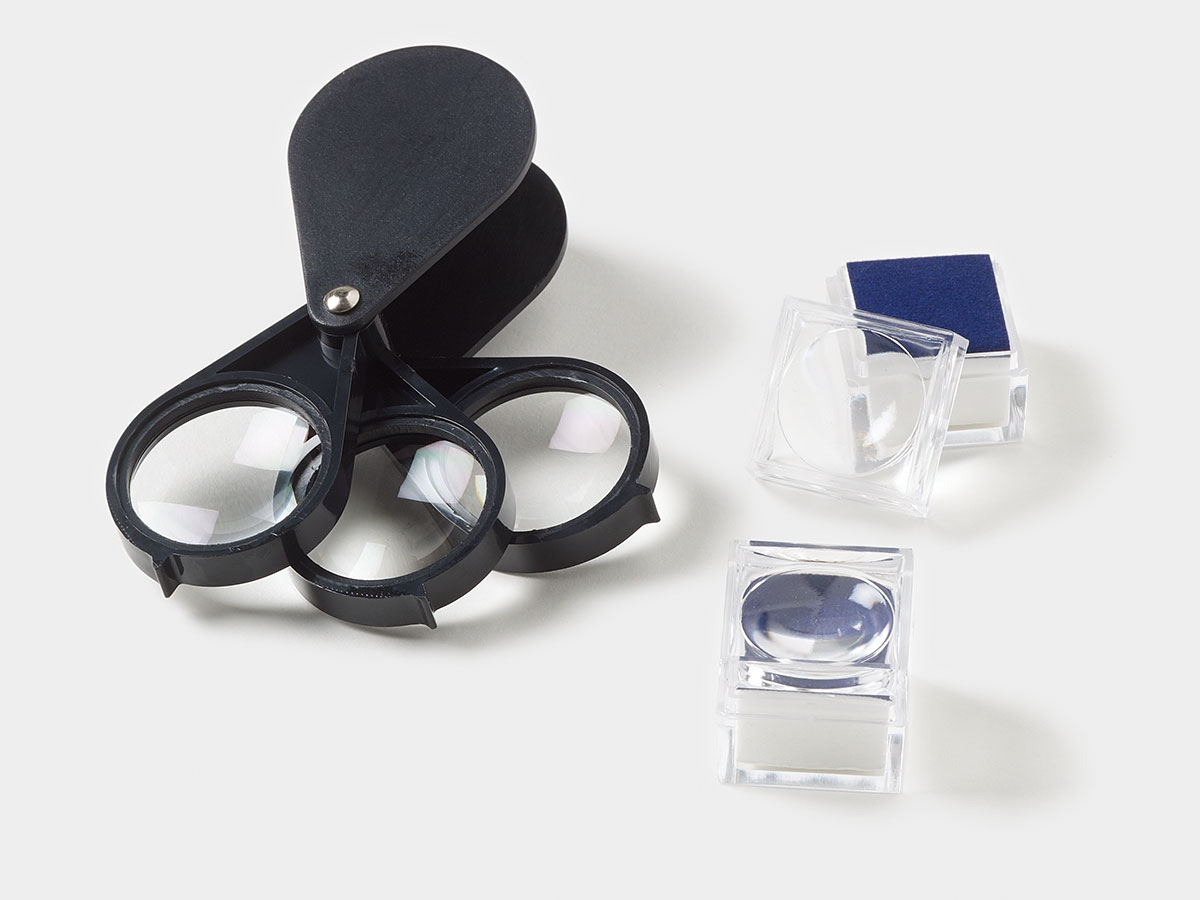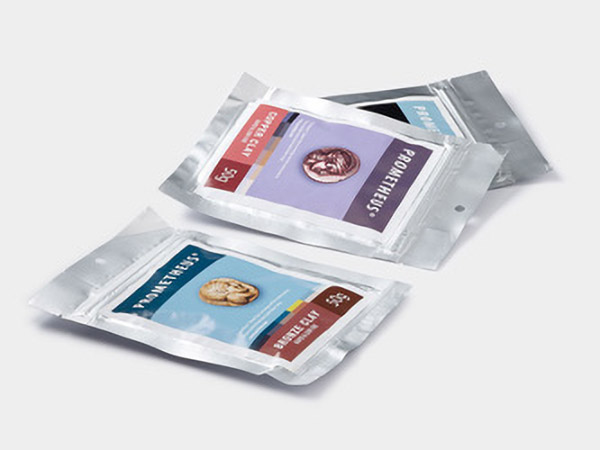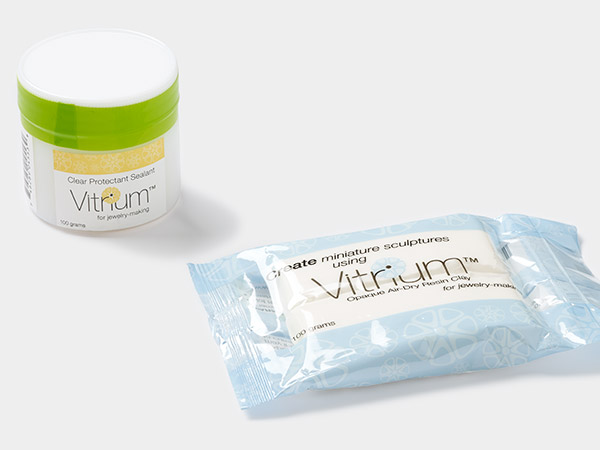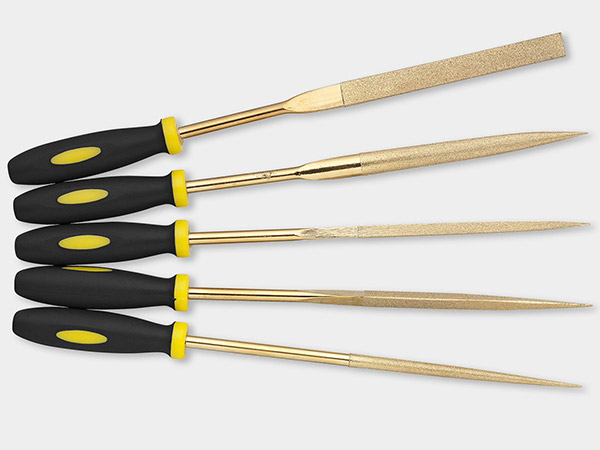A Sterling Reputation: Is Your Piece Fine or Sterling Silver?
Design Idea MK38
When you're a devout visitor of garage sales, secondhand shops and church bazaars, you encounter a lot of old jewelry for sale at amazingly low prices. Some of it is colorful costume jewelry--but some of it can be sterling or other grades of silver.
How do you tell? (Other than taking everything to a jeweler, of course.) There are some quick tests you can do. They're separated into two main categories: tests you can run before you buy and tests you can run after you've brought the piece home. They're also labeled "non-invasive" and "invasive"--some tests listed below will affect the surface of the item with scratches or chemicals, so finding an out-of-the-way area to do your tests is crucial. If you're concerned about damaging a piece, then by all means, stick to the non-invasive tests and take your items to a jewelry or metals expert.
A note before we begin--test results can be skewed by silver-plated and silver-filled items, so have the pieces you're uncertain of double-checked by a professional.
Here are six quick testing methods you can try:
1. Check the Numbers
(before you buy, "non-invasive")
Authentic sterling silver is an alloy of 92.5 percent pure silver and the rest of another metal (usually copper). Sterling silver is frequently marked as "925," ".925," "S925" or similar number marks. Sterling silver pieces can also be marked with the word "sterling." Other common marks indicating silver, especially European, can include "800" or "900." These two weights are called coin silver and were commonly used in currency.
This is not the only test you should do! There are counterfeit items and mismarked pieces. Sometimes, if the price is just a little too good, it might be because the piece is just a little too fake. Carry a jeweler's loupe with you--they're small and portable and oh-so-convenient.
Checking the markings is an easy first step. If you spend 25 cents on a sterling silver ring band and find out it's not sterling silver, that's okay--you've still got a pretty ring to wear or use as a component in your next jewelry design!
2. Test the Magnetic Attraction
(before you buy, "non-invasive")
This test helps you determine if the item is silver-filled or silver-plated over iron or some forms of steel. Be sure to use a strong magnet, like one made from neodymium.
This will not tell you that your piece is silver. It will tell you whether your piece is "not-silver"--that is, whether your piece is plated over something iron-based, nickel-based or cobalt-based. There are some other, far more rare, metals which are magnetic but you're unlikely to come into contact with them. Fair warning: There are types of stainless steel which are not magnetic!
If the magnet sticks, your piece is "not-silver."
If the magnet slides right off, your piece might be silver. It could also be aluminum, lead, pot metal, copper, brass, zinc, tin, pewter, titanium, gold, platinum or any mix of them
3. Ring it Up
(before you buy, "non-invasive")
This is ideal for coins, but can also apply to larger pieces, and should be used for solid pieces only. (This test won't work well on filigree or pieces set with gemstone--they skew the results.)
Use a piece of metal to tap on the largest flat surface of the piece you're testing. If your piece makes a lovely "ringing" sound--a bell-like tone--it's likely to be at least coin silver.
Let's say you liked the piece and bought it, regardless of whether it was silver--or maybe you inherited some silvery jewelry and you want to know what you've got. We've got three additional tests you can use at home to help you determine whether your piece is silver or something else.
4. Ice, Ice, Baby!
(test at home, "non-invasive")
Silver is a fantastic thermal conductor--it transfers heat and cold very quickly. This is a fun test to run, and it's best run with un-set silver pieces which have no gemstone or enameling. All you need is 1) the item you're testing and 2) a flat piece of ice. Small jewelry pieces can probably use an ice cube. For larger pendants and coins, you may need to freeze some water in a disposable cup or foil pan (so you have a nice flat surface).
Place the silver item on the ice, silver side down, and don't take your eyes off of it. The ice should start to melt immediately, as if it were on a hot stove, creating the shape of your item in the ice. The purer the silver, the quicker the melt. This is because silver is the best thermal conductor of all--better than copper and gold. When you touch the silver even a second later, you should notice how cold it really is. The purer the silver, the faster the metal turns cold. If it's only plated, the temperature change and melting won't occur.
If the item has a design (like a silver pendant) without gemstones or enameled color, put the design side down to the ice. As the ice starts melting, pick up the piece. You'll see a reverse version of the design right in the ice!
(Place some silver clay, air-dry resin or polymer clay in this ice mold, lickety-split. You'll be able to replicate the design before it melts!)
5. Bleached Out
(test at home, "-invasive")
This is the first of the "invasive" tests, which means it will affect the surface of the item you're testing. Make sure you test in an area which will not affect the overall look of the piece.
Quick note: if the jewelry is set with gemstones, keep the bleach away from the gemstone! The stone can get damaged, as well as skew your results.
In chemistry, bleach is a strong base (the opposite of an acid). Plain old common household bleach (not Clorox® brand or any of the other more sophisticated bleaches) is a powerful oxidizing agent and silver tarnishes extremely quickly when exposed to it. The purer the silver, the faster the oxidization or tarnishing occurs.
Please note: Silver-plated and silver-filled items will react to bleach just like sterling or fine silver. Do not use this as your only test! It only tests if the surface is silver.
6. Acid Test
(test at home, "-invasive")
This is also an "invasive" test, which means it will affect the surface of the item you're testing. Make sure you test in an area which will not affect the overall look of the piece.
Please purchase a professional testing kit. There are many offered online--it's best to purchase from a jeweler, chemical supply company or another reliable vendor. Products from such vendors are regulated by law and have to meet product standards which resale sites may or may not have to. When you're dealing with chemicals, quality is crucial. Just like the jewelry you're testing, if the price is just a little too good, what you're buying is probably just a little too fake.
This test uses acid, so you must wear protective gear: goggles, apron and rubber gloves. File into the piece in question in some place which will not affect the look of the item. It is important to get below the surface of any plating or coatings, so file deeply enough to get past any. (Triangular needle files are excellent for this task.) Then put a drop of the acid in the groove.
If you get no reaction on a white metal, you may have stainless steel or platinum. If it was almost too difficult to file into, it's probably stainless steel. Sterling silver will turn a milky white or grey.
Summary
Of course, if you're still not sure, take your piece or component to a jeweler. For a fee, they will evaluate your items. If you have broken pieces of sterling or fine silver, your jeweler may offer to purchase it for scrap. Before doing so, make sure you have an idea of the precious metals market so you know what a good price is.
Shop for Your Materials Here:
Have a question regarding this project? Email Customer Service.
Copyright Permissions
All works of authorship (articles, videos, tutorials and other creative works) are from the Fire Mountain Gems and Beads® Collection, and permission to copy is granted for non-commercial educational purposes only. All other reproduction requires written permission. For more information, please email copyrightpermission@firemtn.com.
